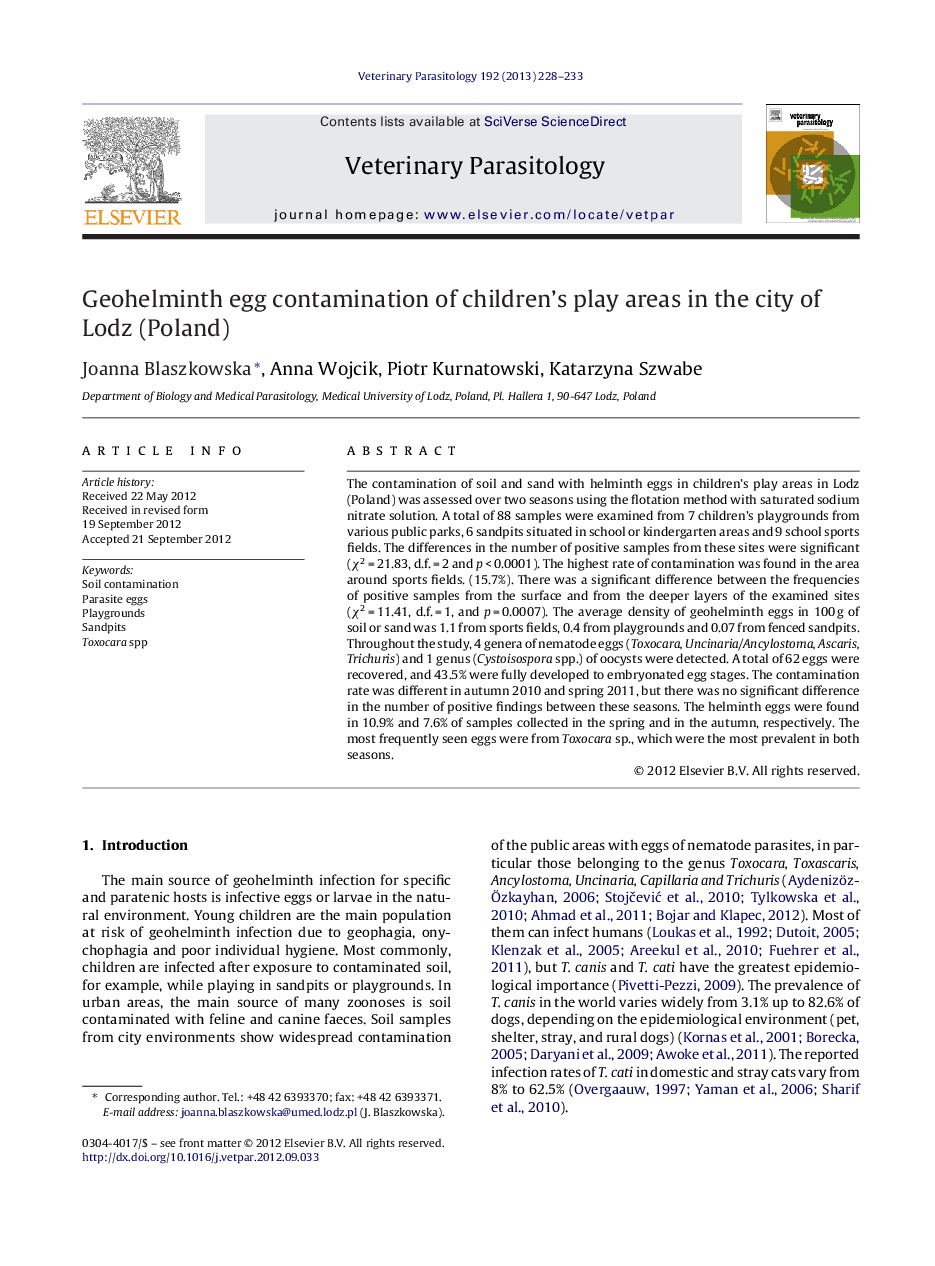| Article ID | Journal | Published Year | Pages | File Type |
|---|---|---|---|---|
| 5804481 | Veterinary Parasitology | 2013 | 6 Pages |
The contamination of soil and sand with helminth eggs in children's play areas in Lodz (Poland) was assessed over two seasons using the flotation method with saturated sodium nitrate solution. A total of 88 samples were examined from 7 children's playgrounds from various public parks, 6 sandpits situated in school or kindergarten areas and 9 school sports fields. The differences in the number of positive samples from these sites were significant (Ï2 = 21.83, d.f. = 2 and p < 0.0001). The highest rate of contamination was found in the area around sports fields. (15.7%). There was a significant difference between the frequencies of positive samples from the surface and from the deeper layers of the examined sites (Ï2 = 11.41, d.f. = 1, and p = 0.0007). The average density of geohelminth eggs in 100 g of soil or sand was 1.1 from sports fields, 0.4 from playgrounds and 0.07 from fenced sandpits. Throughout the study, 4 genera of nematode eggs (Toxocara, Uncinaria/Ancylostoma, Ascaris, Trichuris) and 1 genus (Cystoisospora spp.) of oocysts were detected. A total of 62 eggs were recovered, and 43.5% were fully developed to embryonated egg stages. The contamination rate was different in autumn 2010 and spring 2011, but there was no significant difference in the number of positive findings between these seasons. The helminth eggs were found in 10.9% and 7.6% of samples collected in the spring and in the autumn, respectively. The most frequently seen eggs were from Toxocara sp., which were the most prevalent in both seasons.
